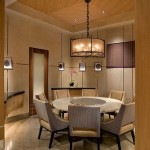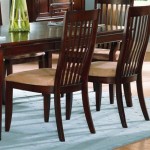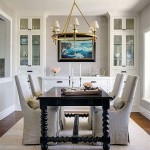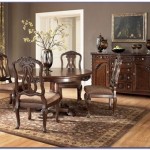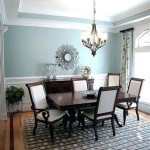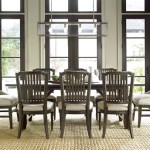Best Flooring For Kitchen And Dining Room
The kitchen and dining room are the heart of many homes, where families gather, meals are prepared, and memories are made. Choosing the right flooring for these spaces is crucial, as it needs to be durable, stylish, and easy to maintain. With a myriad of flooring options available, selecting the best fit for your needs and preferences can be overwhelming. This article will explore some of the most popular flooring choices for kitchens and dining rooms, highlighting their pros and cons, to help you make an informed decision.
Hardwood Flooring: Timeless Elegance and Durability
Hardwood flooring remains a classic choice for kitchens and dining rooms due to its timeless elegance and durability. It comes in various wood species, each offering unique characteristics in terms of color, grain patterns, and hardness. Hardwood flooring is naturally resistant to scratches and dents, making it ideal for high-traffic areas. However, hardwood can be susceptible to water damage and requires regular maintenance, including sanding and refinishing.
When considering hardwood for your kitchen and dining room, consider the following factors:
- Wood species: Different wood species have varying degrees of hardness, durability, and color. Consult with a flooring professional to choose a species that suits your needs and budget.
- Finish: The finish applied to hardwood flooring influences its durability and appearance. A polyurethane finish provides protection and a smooth surface, while an oil finish offers a natural look and feel.
- Installation: Hardwood flooring can be installed using various methods, including nail-down, glue-down, or floating. Consult with a flooring professional to determine the best installation method for your specific situation.
Ceramic and Porcelain Tiles: Low Maintenance and Water-Resistant
Ceramic and porcelain tiles offer a practical and stylish flooring option for kitchens and dining rooms. They are highly durable, scratch-resistant, and impervious to moisture, making them ideal for areas prone to spills and splashes. Ceramic and porcelain tiles come in a vast array of colors, patterns, and styles, allowing you to create a unique and personalized look.
Here are some key factors to consider when choosing ceramic or porcelain tiles for your kitchen and dining room:
- Durability: Porcelain tiles are generally more durable than ceramic tiles, making them a preferred choice for high-traffic areas.
- Glazing: Glazed tiles provide added protection and enhance their aesthetic appeal. Unglazed tiles offer a more rustic look but may require more maintenance.
- Installation: Ceramic and porcelain tiles require professional installation to ensure proper adhesion and prevent cracking.
Luxury Vinyl Tile (LVP): Versatile and Affordable
Luxury vinyl tile (LVP) has gained popularity in recent years due to its versatility, affordability, and practicality. LVP simulates the look and feel of natural materials like hardwood, stone, and tile, but is more resistant to scratches, dents, and water damage. It is also relatively easy to install, making it an attractive DIY option for homeowners.
Here are some factors to consider when choosing LVP for your kitchen and dining room:
- Wear layer: The wear layer determines the durability of LVP. Choose a tile with a thicker wear layer for high-traffic areas.
- Core: Different LVP tiles have different core materials, which impact their rigidity and sound dampening properties.
- Installation: LVP can be installed using various methods, including click-lock, glue-down, and floating.
Laminate Flooring: Durable and Budget-Friendly
Laminate flooring offers a budget-friendly alternative to hardwood flooring, offering a similar aesthetic appeal. It is composed of layers, including a wear layer, decorative layer, and core layer. Laminate flooring is durable, scratch-resistant, and water-resistant, making it a suitable option for kitchens and dining rooms.
When considering laminate flooring for your kitchen and dining room, consider the following factors:
- Wear layer: The wear layer determines the durability of laminate flooring. Choose a tile with a thicker wear layer for high-traffic areas.
- Installation: Laminate flooring is typically installed using a click-lock system, making it a relatively easy DIY option.
- Maintenance: Laminate flooring is easy to maintain, requiring regular sweeping or vacuuming.
Ultimately, the best flooring for your kitchen and dining room depends on your unique needs, lifestyle, and budget. By considering the factors discussed above, you can choose a flooring option that is both stylish and functional, ensuring your kitchen and dining room remain a welcoming and comfortable space for years to come.

Best Kitchen Flooring Options Choose The For Your Hgtv

What S The Best Dining Room Flooring

Kitchen Flooring Ideas The Top 12 Trends Of Year Décor Aid

Best Flooring For Your Dining Room Twenty Oak

Best Flooring Guide 9 Types Of Floor Options For Your Home

Best Kitchen Flooring Options Choose The For Your Hgtv
What Is The Best Flooring For A Kitchen Tarkett

Best Flooring For Kitchens How To Choose The Right Material Real Homes

Best Kitchen Flooring Options Tile Warehouse

Best Tile For Kitchen Floor How To Make The Right Choice


